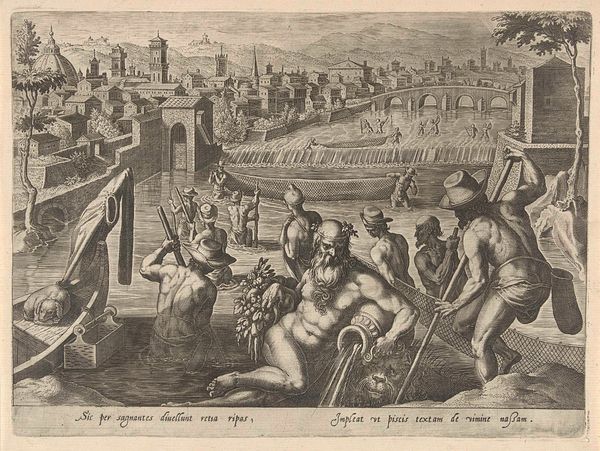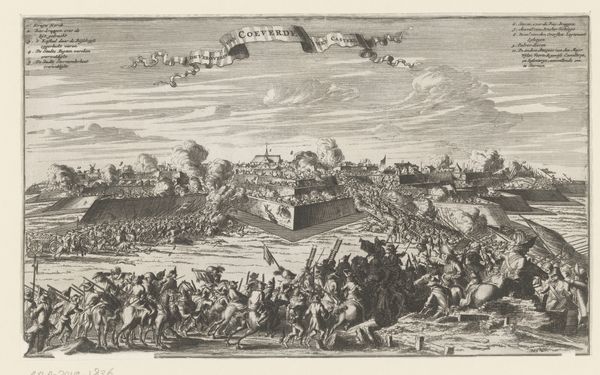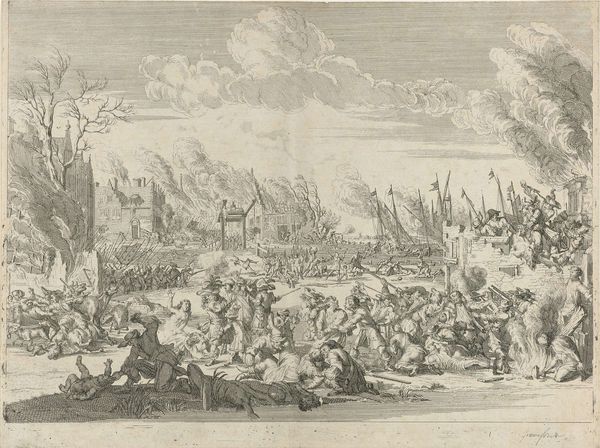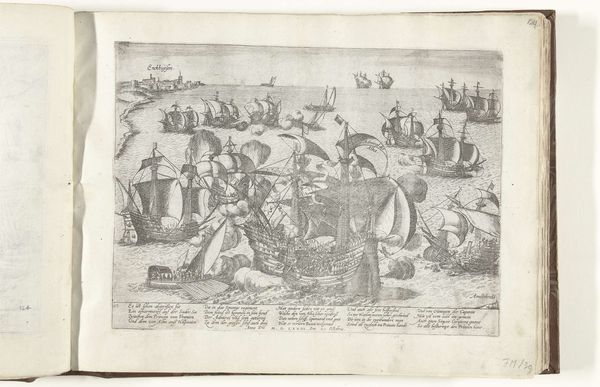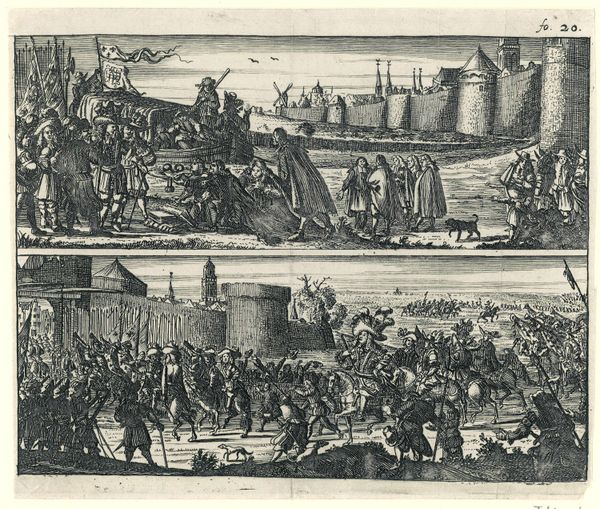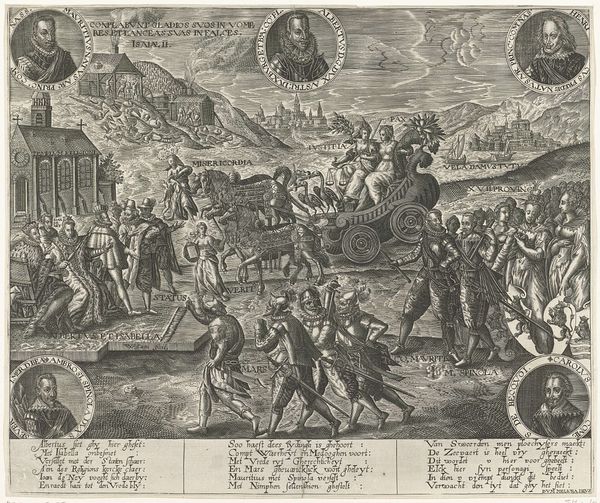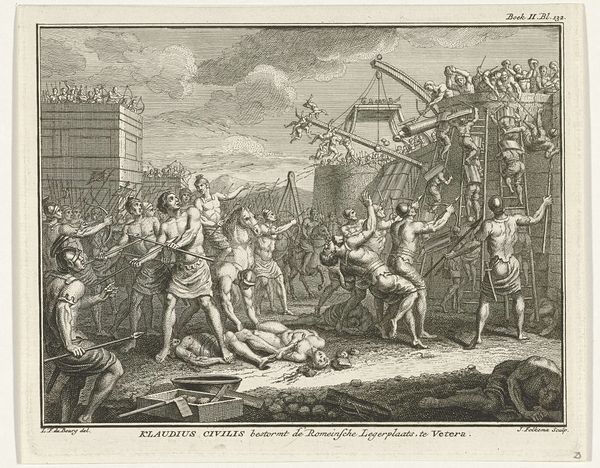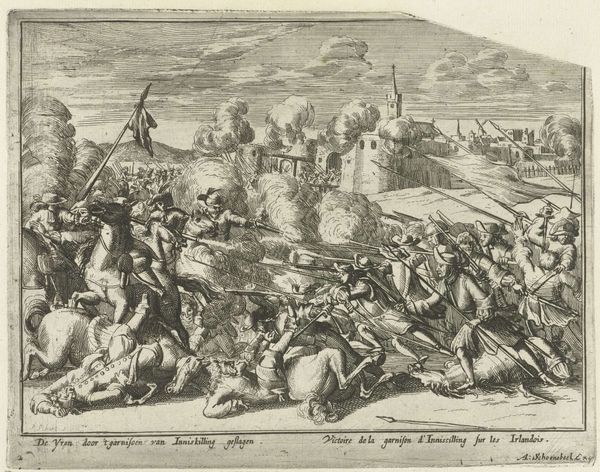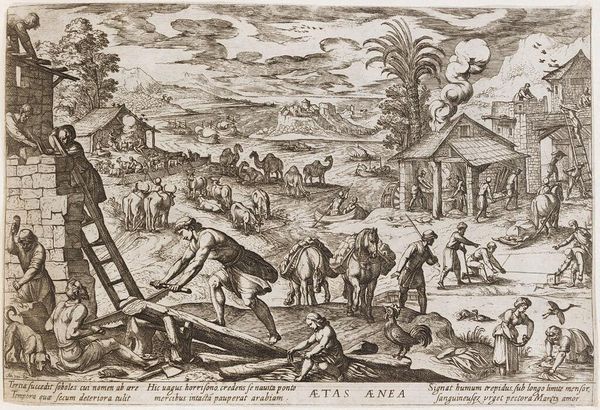
print, engraving
#
allegory
# print
#
landscape
#
mannerism
#
figuration
#
line
#
genre-painting
#
history-painting
#
engraving
Dimensions: height 342 mm, width 430 mm
Copyright: Rijks Museum: Open Domain
Curator: Here we have a striking print from the Rijksmuseum's collection titled "H. Martinus aan boord van een narrenschip," dating roughly between 1548 and 1570, and currently attributed to an anonymous artist. It’s an engraving depicting a chaotic scene on water. Editor: My first impression? It's utter mayhem! Look at the sheer density of figures crammed into those boats. There's a frenzy about it, a dark humor, and those sharp lines! This must be incredibly labor-intensive print work. Curator: Indeed. The print utilizes line technique typical of the Mannerist period, presenting us with an allegory. The 'ship of fools' theme itself is steeped in social critique. Here, Saint Martin is depicted amongst fools; the whole artwork reads like an intersectional discourse on marginalization. What systems of power create such madness, such visual chaos? Who gets included, who is deemed a "fool" and ostracized? Editor: I see the craftsmanship in creating a scene so dense and so lively using the engraved line. Consider the materials—the paper, the ink, the metal plate used for the engraving, and then the social act of dissemination, through printmaking. This artwork functions not merely as an isolated creation but a node in a vast web of economic and creative production. What class produced this? What need were they fulfilling? Curator: Precisely. It challenges our perception of labor and the definition of 'high' art, too. Printmaking allowed these kinds of allegorical narratives to circulate amongst wider audiences, influencing perceptions and sparking dialogues about social and religious norms of the time, especially against the backdrop of burgeoning capitalism. The social impact then stems from its accessibility—both intellectual and material. Editor: Right. Every choice, from the paper quality to the distribution methods, would affect the artwork's life. Thinking about it through the lens of production and circulation makes it incredibly vital and surprisingly accessible even now, centuries later. It transcends pure aesthetic enjoyment, giving glimpses into the economic structures of the era and allowing them to comment, from a material space, on Saint Martin’s presence amongst societal fools. Curator: Absolutely. Exploring this artwork has reaffirmed the interconnectedness of material and concept, revealing just how historical objects continue to ignite essential dialogues across centuries. Editor: It reminds us that even apparent chaos carries material realities. What's perceived as nonsense on the surface reveals the power structures that perpetuate the illusion when observed more closely.
Comments
No comments
Be the first to comment and join the conversation on the ultimate creative platform.


